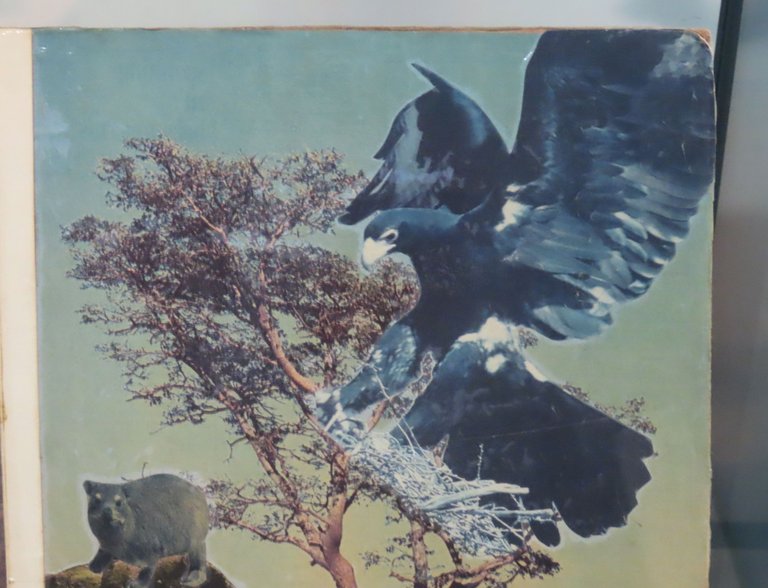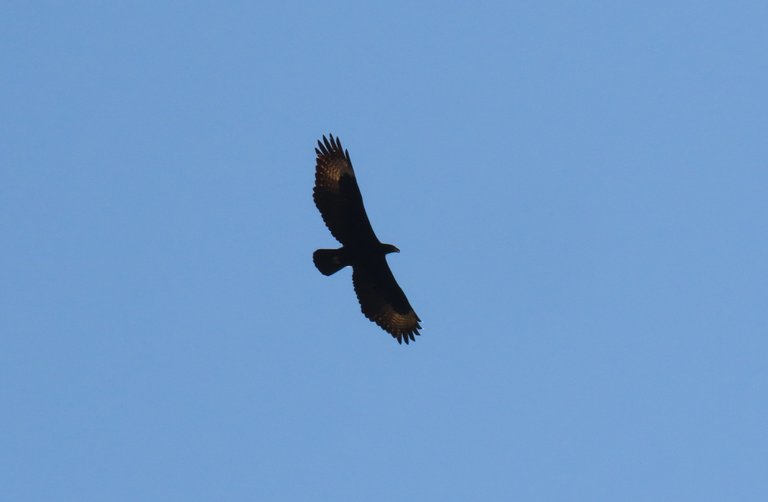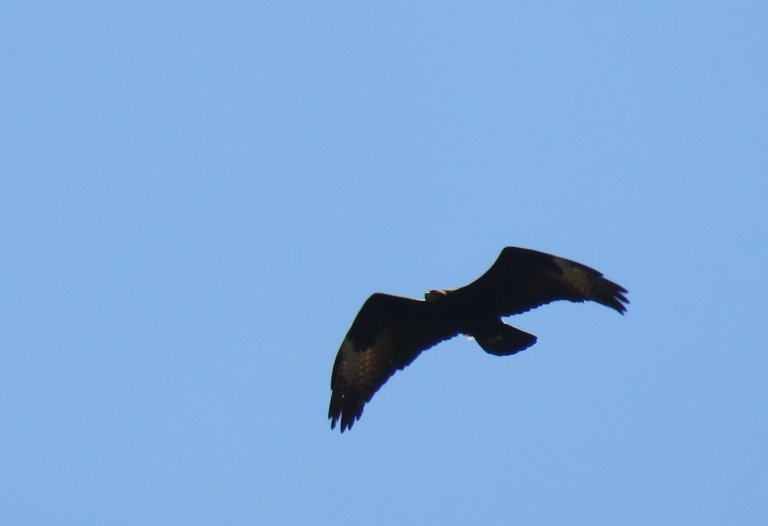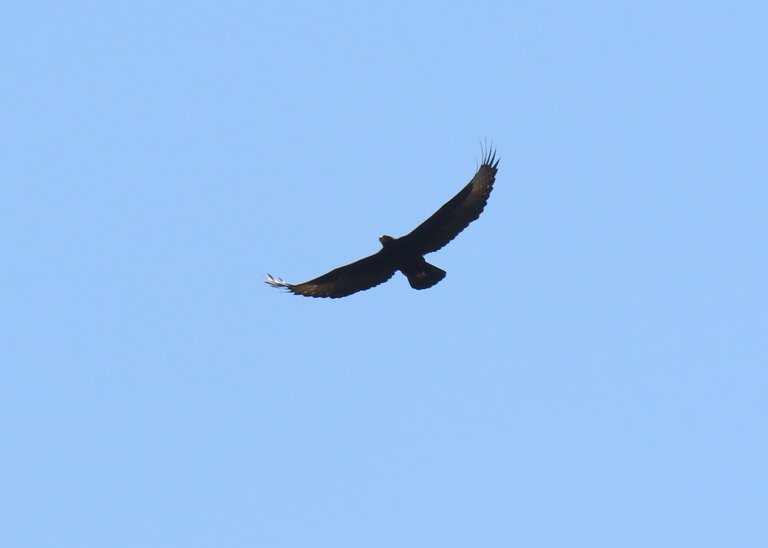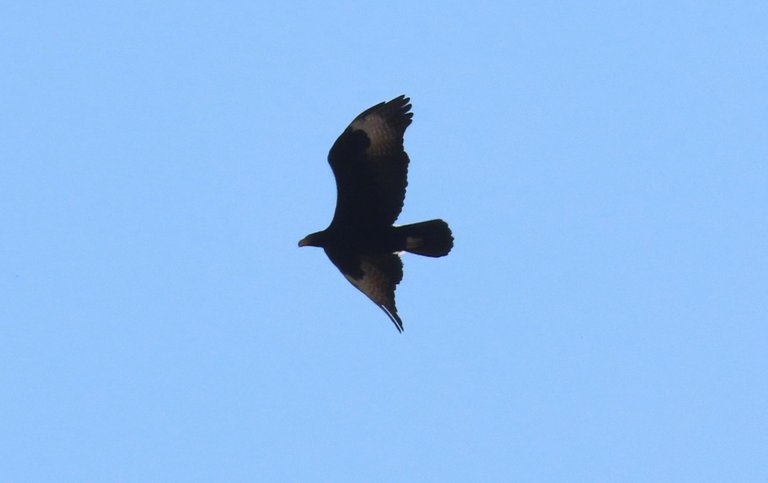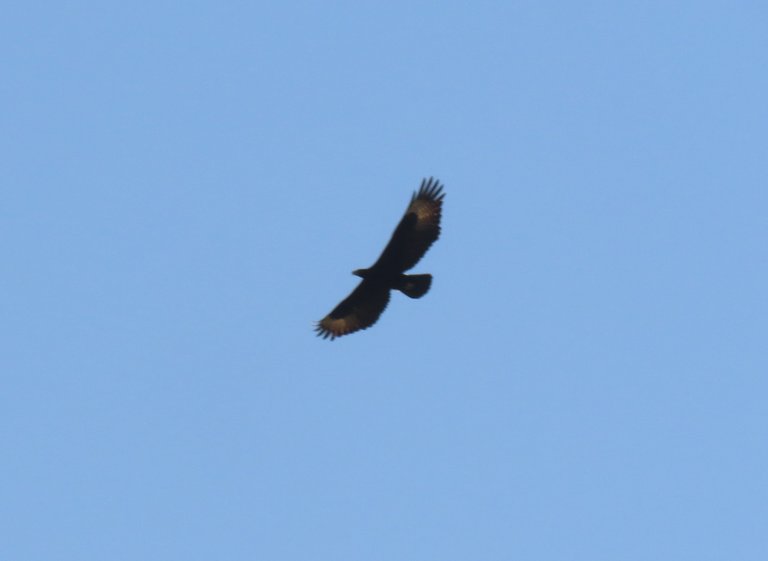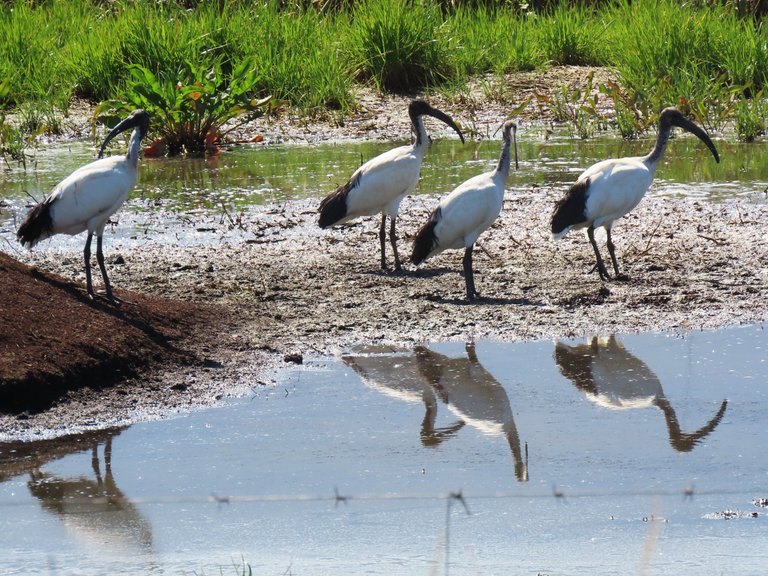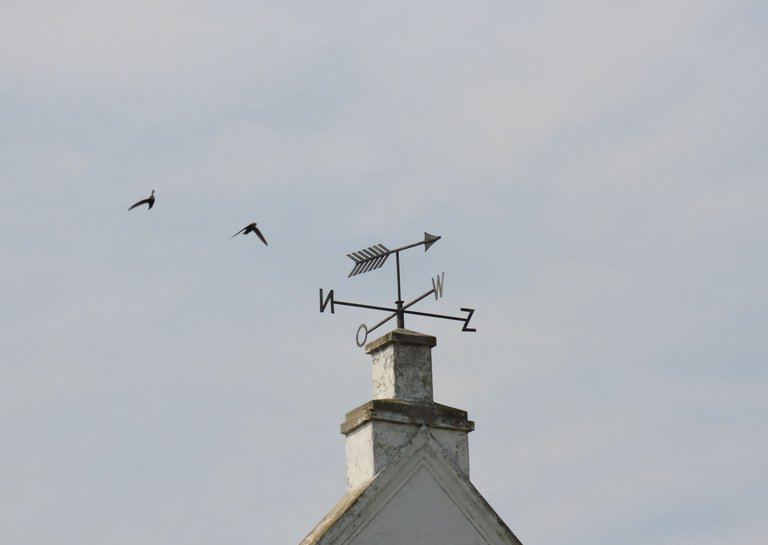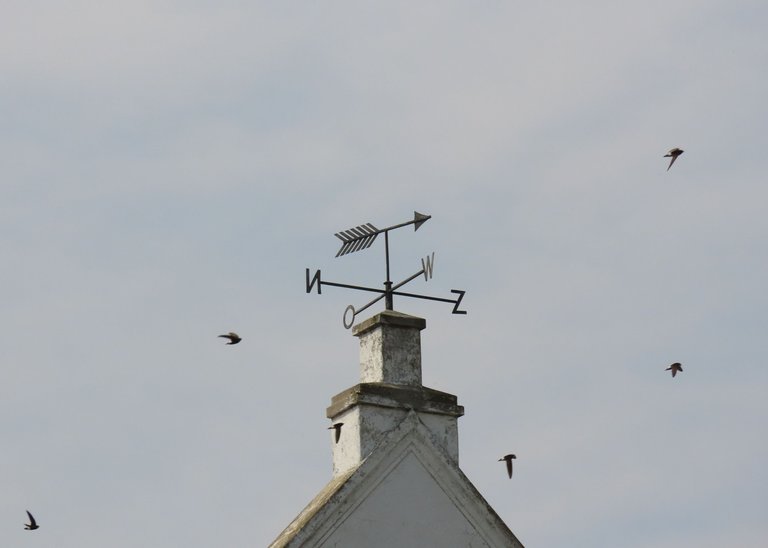This is no ordinary eagle as you will see below.

I took the first two photos in a museum with permission of course.
We were out on a 2-day visit to explore two towns inland namely Ceres and Tulbagh, and it was in the Ceres Museum where I found the two pictures of the Aquila eagle. The museum also has many other artifacts and exhibitions that I will show you in another post. When I looked at the pictures of the Aquila in the museum, I so longed to get a real Aquila eagle on camera one day. Well, today was such a day.
So now, let's have a look at my scoop.
Verreaux's eagle (Aquila verreauxii) is a large, mostly African, bird of prey. It is also called the black eagle, especially in southern Africa, not to be confused with the black eagle (Ictinaetus malayensis) of south and southeast Asia. The Verreaux's eagle lives in hilly and mountainous regions of southern and eastern Africa (extending marginally into Chad, Mali and Niger), and very locally in the Middle East.
Source
And here's the second painting of the Aquila, and you will see his prey at the bottom of the picture. It is a Rock Hyrax.
And now, I saw this strange bird in the sky. So, I pulled the car over on the road and got out to take photos of it.
Yep! It was the real thing. This is the Aquila verreauxii.
You will not believe how happy I was to get this, because it was the first time for me to get this prize eagle.
No need to tell you that these are very big eagles, as you will see their prey in the bolded section below.
Verreaux's eagle is one of the most specialized species of accipitrid in the world, with its distribution and life history revolving around its favorite prey species, the rock hyraxes. When hyrax populations decline, the species have been shown to survive with mixed success on other prey, such as small antelopes, gamebirds, hares, monkeys and other assorted vertebrates. Despite a high degree of specialization, Verreaux's eagle has, from a conservation standpoint, been faring relatively well in historic times. One population of this species, in the Matobo Hills of Zimbabwe, is arguably the best studied eagle population in the world, having been subject to continuous detailed study since the late 1950s. Like all eagles, this species belongs to the taxonomic order Accipitriformes (formerly included in Falconiformes) and the family Accipitridae, which may be referred to colloquially as accipitrids or raptors.
There was a puddle of rainwater next to the road, and when the eagle was gone, I took the reflections of some Sacred Ibis birds in the water.
Later in the town, we sat to have some coffee and the two swallows passing the weathervane drew my attention.
They must have seen me taking photos of them, so they called the whole swallow family over for a shot:))
I have heard stories about the Aquila eagle, and back up in Gauteng province, there is also a pair that breed every season in the Walter Sisulu Botanical gardens. My in-laws often go there to have a look at them. They call them black eagles and I bet that they are going to be surprised that I tell them that they are actually Aquila eagles, as noted in the sourced sections.
That's all for now, until next time.
I hope you enjoyed the pictures and the story.
Photos by Zac Smith-All Rights Reserved.
Camera: Canon PowershotSX70HS Bridge camera.
Thank you kindly for supporting this post.
